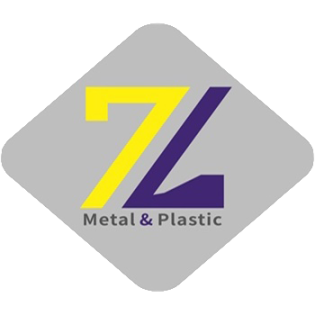Aluminium Extrusion
Also known as aluminum profiles, are long, strong shapes produced through the aluminum extrusion process. The process involves pushing a heated billet of aluminum into a forming die, which creates various cross-sectional profiles.
These profiles are widely used in numerous industries due to their versatility, durability and cost-effectiveness.
Begins by heating a billet of aluminum to a specific temperature. This makes the metal more malleable and suitable for extrusion. The heated blank is then pushed through a specially designed die using a hydraulic press or punch. The mold gives the aluminum extrusion the desired shape and cross-sectional profile. After extrusion, the profile is cut to the required length and may undergo additional processes such as surface treatment or machining.
First, they have an excellent strength-to-weight ratio, making them lightweight yet strong. This makes them ideal for applications where weight reduction is critical, such as in the automotive and aerospace industries. Second, the extrusion process can create complex shapes and complex designs. This flexibility enables the production of customized profiles that meet specific application requirements. Third, aluminum profiles have high corrosion resistance, allowing them to withstand harsh environments without compromising their structural integrity. Additionally, aluminum is highly recyclable, making it an environmentally friendly choice.
In the construction sector, these profiles are used in window frames, curtain walls and structural components. Their corrosion resistance, light weight and aesthetics make them ideal for construction applications. In the automotive industry, aluminum profiles are used in chassis components, heat exchangers and body panels. Their strength, light weight and thermal conductivity make them ideal for improving fuel efficiency and reducing emissions. Additionally, the electrical industry uses aluminum extrusions for heat sinks, LED lighting, and electrical enclosures due to their excellent thermal conductivity. Other industries such as transportation, machinery and consumer goods also benefit from the use of aluminum profiles.
Aluminum profiles are widely used in various industries for their versatility, durability, and lightweight properties. They can be found in construction, transportation, electronics, and many other applications. While aluminum itself possesses corrosion resistance and a smooth surface, surface treatments are often applied to enhance its appearance and properties. Some common surface treatments for aluminum profiles include:
Mill finish: which is aluminium alloy original color directly extrusion from the extruder. Which means not need to other surface treatment.
Anodizing: Anodizing is an electrochemical process that creates a protective oxide layer on the aluminum surface, resulting in increased corrosion resistance and hardness. It also allows for coloring options and improves the aluminum's aesthetic appeal.
Powder coating: Powder coating involves applying a dry powder coating onto the aluminum surface electrostatically. The coated profiles are then cured in an oven, resulting in a durable and attractive finish. Powder coating provides excellent protection against weathering, UV rays, and abrasion.
Polishing: Polishing is a mechanical process that creates a smooth and shiny surface on aluminum profiles. It enhances the appearance of the profiles and gives them a mirror-like finish.
Brushing: Brushing is a surface treatment technique that creates linear or circular brush patterns on the aluminum profiles. It can give a modern and stylish appearance to the profiles and is often used in architectural applications.
Electrophoresis: Electrophoresis is an electrochemical coating process that ensures a uniform and corrosion-resistant finish on aluminum profiles. It offers good adhesion and enhances the profiles' durability and weather resistance.
Aluminum profiles can be manufactured using various aluminum alloy grades, each with its unique properties. Some commonly used aluminum alloy grades for profiles include:
6063: This is the most common aluminum alloy grade used for profiles. It offers good extrudability, corrosion resistance, and surface finish. It is widely used in architectural applications, such as window frames, door frames, and curtain walls.
6061: It is a high-strength alloy with excellent machinability and good corrosion resistance. It finds applications in marine components, structural parts, and transportation industries.
6082: Known for its exceptional strength and corrosion resistance, 6082 alloy is commonly used in structural and transportation applications, such as bridges, trusses, and automotive components.
6005: This alloy has good extrudability and strength. It is often chosen for profiles that require deep machining, such as heat sinks and electronic enclosures.
7005: It is a high-strength alloy with good toughness. It is suitable for applications requiring high structural integrity, such as bicycle frames, automotive parts, and sporting equipment.
These are just a few examples of the many aluminum alloy grades available for producing profiles. The choice of alloy grade depends on the specific application requirements, including strength, corrosion resistance, extrudability, and surface finish.
